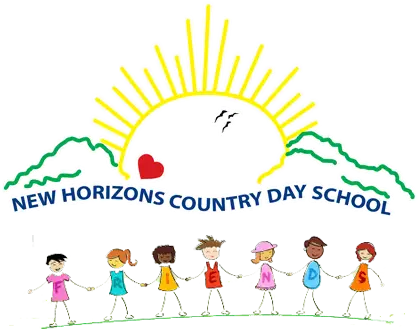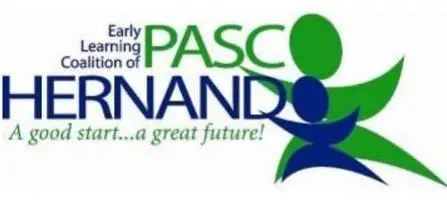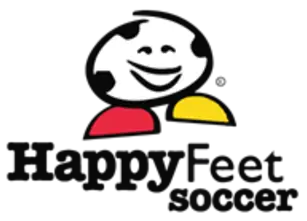
Experts say board games can boost a slew of skills that help kids do better in school. And playing them as a family just ups the benefits—and the fun factor.
By Linda Rodgers
Games are great for kids for different reasons at different ages. For preschoolers, they’re a fun way to learn how to “follow rules, focus, take turns, and defer gratification, which helps with self-regulation, the basis of problem-solving and thinking creatively,” explains Peter J. Pizzolongo, the senior director of professional development at the National Association for the Education of Young Children. Board games also get bonus points for bringing families together (especially if family dinners are a rare occurrence) and for luring grade-schoolers away from the Wii. And all kids get lessons in decision- making (“Should I buy Boardwalk or save my money?”), consequences (“Ooops—no more cash!”), and strategic thinking (“If I swap two railroads for Boardwalk, I can start buying houses”).
So should you set up regular times to play or let your child set the agenda?
“Both,” says Pizzolongo. “Let your child come to you, but setting aside a special evening or afternoon gives her a ritual—and predictability and routines are important for kids.” For ideas on what to play, read on for the games that get the highest marks from experts.

Uno
This card game for two or more players can be aged up (the original, with words, numbers, and colors) or down (with Thomas the Tank Engine or Disney Princess characters), says Shannon Eis, a play and development expert and mom of two. It’s good for preschoolers to about age 8 or 9.
How you play it: Shuffle the deck of 108 cards and deal seven to each player. Put the rest of the cards in a pile, and turn one over. The card that’s face up is the start of the discard pile; the larger one is the pile you draw cards from. Each person must put down a card that’s either the same number or color as the card on the discard pile. There are also wild cards and cards that cause a person to skip her turn, draw more cards, and so on. The first player with no cards wins.
What it teaches kids: Paying attention is a crucial skill in school—and that’s just what preschoolers pick up when they focus on the cards and remember to play the same color (or character). Besides reinforcing numbers and colors, Uno also sharpens pattern recognition: your child won’t take algebra until eighth grade, but patterns will help her understand the relationship between objects and numbers, which is the basis of algebra. Older kids get lessons in logic, reasoning, and strategy by deciding which cards to throw down now and which to save for the next turn.
Uno, $5.78, from amazon.com

Bingo
This is another game that can be tailored to preschoolers who don’t yet know their letters or numbers, says Eis. You can buy versions that are just shapes, colors, or everyday objects (Zingo), or you can just cut out photos of things that fascinate your little one (cars, say, or animals) from catalogs. Kindergarteners on up can play the classic version with letters and numbers.
How to play: Each player gets a pile of tokens and a card divided into a 25-square grid with 24 numbers and a blank space in the middle and a row on top that spell out “BINGO.” The caller picks out numbers from a basket, and calls it out: “B-5,” for example, or “I-26.” The first player to fill up a row with tokens—either diagonally, horizontally, or vertically—shouts “Bingo!” and wins the game.
What it teaches kids: No matter which version you’re playing, your cutie’s listening and memory skills will get a workout. Another benefit: she’ll practice her ability to visualize shapes and objects (and later, letters and numbers) and then match them on her card, both of which are necessary for learning to read and do math.
Bingo, $5.32, from amazon.com

Where is Sock Monkey?
A cross between Twenty Questions and Clue, this game gives wiggly preschoolers and young grade- schoolers a lesson in deductive reasoning and a chance to race around the house, says Sherry Artemenko, a speech therapist and creator of playonwords.com, an award-winning speech therapy site.
How to play it: One player hides the six-inch sock monkey (which comes with the game) while the other players close their eyes. When the hider returns, the players take turns drawing illustrated cards with yes or no questions—“Is the monkey in a room with a fridge?” “Is it in the living room?”—designed to uncover the monkey’s whereabouts. When a player draws the “Go look” card, she must race to a room to find the monkey before the timer goes off.
What it teaches kids: Your preschooler or kindergartner won’t be able to read the questions, but she can figure them out from the illustration—a decoding strategy that will come in handy when she learns to read. The game also gives her practice in asking questions, listening for the answers, following directions, and putting clues together—all crucial skills for the classroom.
Where Is Sock Monkey?, $16.99, from amazon.com

Dominoes
Dominoes is another grade-school game that can be scaled down to the preschool level by buying tiles in colors, Disney characters, or animals, instead of the classic tiles marked with dots (like dice) from 0 to 6, says Eis, who’s also a contributor to Time to Play.
How to play it: Put the 28 tiles face down on a table and shuffle them. Each player draw seven tiles, and the rest are left in what’s known as the “boneyard.” The person with the highest double tile goes first, placing the domino on the table. The next player must match one of the halves with a tile containing the same number or character. If a player can’t make a match, she has to draw a tile from the boneyard. The player who gets rid of all the dominoes wins. Older kids can play for points—the first one to reach 50 or 100 wins the game.
What it teaches kids: Besides being a good way to get kids to recognize numbers or objects quickly, dominoes is also good at honing a kid’s ability to spot patterns, since that’s what you need to make a match. The game also sharpens critical thinking and strategy, since older kids must decide how to maximize the number of points.
Dominoes,$13.60, from amazon.com

Richard Scarry’s Busytown Eye Found It
This 6-foot-long board game gets kudos from Artemenko and scores of Amazon users, who’ve made this preschool-friendly game based on cooperation (and the brilliant Busytown books by Richard Scarry) a bestseller.
How to play it: The object of the game is to get all the players onboard the ferry to Picnic Island to eat their lunch before the pigs gobble up the food. In order to do that, each player takes a turn at the spinner, and follows the directions—move four spaces, for instance, or lose a piece of food. When the spinner points to Goldbug, someone flips over the sand timer, and all the players band together to hunt for as many items of the object (shovels, say) listed on the Goldbug card before the sand runs out. Players get bonus moves depending on the number objects they’ve found on the board.
What it teaches kids: Teamwork pays off, and that’s a great lesson for a preschooler or kindergartner who’s learning how to work with classmates. The game also reinforces your child’s ability to recognize objects and match them on the board, hones her powers of observation, and gives her practice in associating categories with people and actions—for example, learning you’ll find shovels and hammers at a construction site.
Richard Scarry’s Busytown Game, $19.99, from amazon.com

I Spy Ready to Read
Based on the I Spy books, this board game is actually five games in one, and is geared to kids ages 4 to 6. You may have to help your pre-reader with the riddles at first, says Eis.
How to play: Each player gets a card that has punch-out tokens on one side and four riddles on the other. In the simplest version of the game, players take turns reading from a riddle, finding the object, and punching out the token. After all the tokens are punched out, you can play the game in reverse: Read the riddle, find the object, and put it back in the card. Other versions of the game include a memory game, where kids look for pairs of objects that rhyme.
What it teaches kids: This is another matching game that helps kids practice their visual skills and letter recognition. But even better, this game is based on rhymes, which help your child become more aware of language structure by hearing the syllables in each word and sentence.
I Spy Ready to Read, $15.68, from amazon.com

Connect Four/Connect 4 Launchers
Connect Four and Connect 4 Launchers (an updated version of the classic) provide the right type of challenge for your grade-schooler, who’s developmentally ready to become a better strategist, Eis explains. Yes, she’s still a sore loser (especially when she plays with you), but she’s also learning what she’ll need to do to win the game next time around.
How to play it: Connect Four is like a combo of tic-tac-toe and checkers for two players. Each player picks a color, gets their pile of 21 checkers, and then takes turn sliding a checker into a plastic grid. The player who gets four in a row—either horizontally, vertically, or diagonally—wins. Connect 4 Launchers lets players launch their checkers onto a two-tiered platform, adding a new element of challenge: Now your child has to send her checker flying in such a way that it hits the right spot on the grid.
What it teaches kids: To win the game, your child has to plan out her moves, so both versions sharpen her abilities to think critically and logically. Plus, she not only has to focus on what she’s doing, but on what her opponent is too—a skill known as divided attention.
Connect Four, $20.19, fromamazon.com; Connect 4 Launchers, $26.18, from amazon.com

Bananagrams
If your child is too young or too impatient for Scrabble, get her started on this take-and-play-anywhere word game that’s great for kids 5 and up.
How to play it: Dump out the 144 letter-tiles face down on the table. Each player takes at least 21 tiles (fewer if you have more than four players) and, after someone yells “Split!”, starts to create her own crossword puzzle, racing to finish before the others. When you run out of tiles, yell, “Peel!” and everyone must pick a tile from the bunch in the middle. The player who uses up all the tiles wins— provided there are no more left in the bunch to pick from.
What it teaches kids: Like Scrabble, this fast-paced game is a reading, writing, spelling, and vocabulary booster.
Bananagrams, $14.95, from amazon.com

Animal Mastermind Towers
Making and breaking codes appeal to your grade-schooler’s more advanced thinking skills, says Eis. Animal Mastermind Towers is a little-kid-friendlier version of the classic for children 5 to 7.
How to play it: In Animal Mastermind Towers, each player gets four animal tiles and a tower. Players stack the tiles so their opponent can’t see; then each takes turns asking yes or no questions (“Is the penguin above the hippo?”) to guess the order of the tiles. The object is to break your opponent’s code in the fewest number of turns. Older kids will love the classic Mastermind, which involves pegs of different colors.
What it teaches kids: Because your child must remember her opponent’s answers, Animal Mastermind Towers helps boost memory as well as deductive skills (“If the penguin isn’t below the hippo but above the giraffe, maybe the order is giraffe, penguin, hippo, lion!”). Making up a code teaches strategy, a useful skill for helping your child decide how to tackle any situation, in the classroom or on the playground.
Animal Mastermind Towers, $11.11, from amazon.com

Angry Birds Knock on Wood
The smartphone version has been downloaded 350 million times, and if your 5- to 8-year-old is a fan, you might want to lure her offline for this hands-on, cooperative version.
How you play it: Like the app, the object of the game is to catapult birds at a structure and knock it down. Players work together to build the structures according to the directions on the mission cards; then each player takes a turn launching the birds with a slingshot.
What it teaches kids: Building the structures requires teamwork, which is great for kids learning to work together in small groups. Copying the structure from the cards means your child get practice following directions, recognizing patterns, and perfecting her fine-motor skills.
Angry Birds Knock on Wood, $33.50, from amazon.com

Monopoly
By the time your child is in third grade, she’s mastered the basics, so what she needs now are games that teach her patience, persistence, and flexibility, says Eis.
How to play it: Players scoot along the board, buying up property, building houses, and amassing as much play-money cash as possible. The object is to become the richest player by bankrupting your opponents. Along the way are chance cards that can change a player’s luck. Monopoly Junior is a scaled-back version for kids 5 to 8, with amusement park rides and ticket booths instead of properties and houses.
What it teaches kids: Besides giving kids practice in making change, Monopoly is a fun way to teach such grown-up concepts as saving, budgeting, and financial planning. Plus the random element (“Go directly to jail!”) teaches your child how to adapt to sudden changes.
Monopoly, $17.77, from amazon.com

Rory’s Story Cubes
Sometimes it’s good to play open-ended games that don’t involve winning. This game has the added benefit of getting your child ready to write more complex stories, says Artemenko. It’s recommended for kids 8 and up, but younger ones can play too.
How to play it: The game comes with nine six-sided cubes, all of which have a sketch—aliens, eyes, keys, chat balloons, wands, flashlights, and more—on each side. Roll the cubes and make up a story based on the sketches that appear face up.
What it teaches kids: The sketches are abstract enough that your child can interpret them any way she wants, which is great for spurring her imagination. She’ll also learn to create stories with beginning, middles, and endings, turn something abstract into something more concrete, and how to spin an entertaining story.
Rory’s Story Cubes, $6.86, from amazon.com

Battleship
This game, unlike any other, helps a child visualize a grid as she figures out how to sink her opponent’s ships, explains Eis. You can even play the game with pencil, paper, and graph paper. A two-person game, it’s best for kids 8 and older.
How to play it: Each player gets a board with two grids—one for keeping track of her opponent and the other for hiding ships—five ships of different lengths, and two different colored pegs. Players take turns firing of their shots: You call out a number and letter on the grid. Your opponent must say if you’ve scored a hit or missed; you mark each miss with a white peg and each hit with a red one. The player who sinks all her opponent’s ships first, wins.
What it teaches kids: It takes a certain amount of cunning to hide all five ships in such a way that make them difficult to find, so logic, planning, and reasoning all come into play here, as do deductive powers, problem-solving, and memory.
Battleship, $29.99, from amazon.com

Scrabble
Teachers and child education experts love Scrabble, which is why you’ll find it in every classroom, especially once your child hits third and fourth grades.
How to play it: Place all 100 letter-tiles in a bag, and let each player get seven tiles, which are arranged on a tile board. Players take turns creating words on the board; one letter of each new word must connect to a previous word. Since each letter is worth a certain amount of points, the object is to create words with the highest point value. The player with the most points wins.
What it teaches kids: Not only does Scrabble help your child with reading, vocabulary, and spelling, but it teaches math (she has to keep adding up her points), problem-solving and strategy (she has to plot how to get the biggest bang from a word), and is great for boosting her attention span and long- term memory, which help her test-taking and study skills.
Scrabble, $12.26, from amazon.com
Experts say board games can boost a slew of skills that help kids do better in school. And playing them as a family factor.





